Exponents
Exponents are a shorthand way of representing repeated multiplication of the same number. The exponent of a number says how many times to use that number in a multiplication. It is written as a small number to the right and above the base number.
Basic Terminology:
- Base: The number that is being multiplied in the expression. For example, in 23, 2 is the base.
- Exponent: The number that represents how many times the base is being multiplied. In the expression 23, 3 is the exponent.
- Power: The result of raising a base to an exponent. In 23, the power is 8.
Rules of Exponents:
- Product of Powers: When multiplying two powers with the same base, add the exponents. For example: 23 * 24 = 27.
- Quotient of Powers: When dividing two powers with the same base, subtract the exponents. For example: 25 / 22 = 23.
- Power of a Power: When raising a power to another power, multiply the exponents. For example: (23)2 = 26.
- Zero Exponent: Any non-zero number raised to the power of 0 is 1. For example: 50 = 1.
- Negative Exponent: A negative exponent indicates the reciprocal of the base raised to the positive exponent. For example: 2-3 = 1/(23).
Practice Problems:
- Calculate the value of 42.
- Simplify the expression 34 * 32.
- What is 50?
- Find the value of (23)2.
- Simplify the expression 62 / 64.
- Calculate the value of 7-2.
[Exponents] Related Worksheets and Study Guides:
.◂Math Worksheets and Study Guides Fifth Grade. Angles
Study Guide Angles
Angles  Worksheet/Answer key
Worksheet/Answer key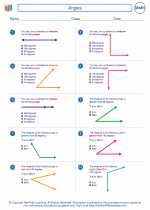 Angles
Angles  Worksheet/Answer key
Worksheet/Answer key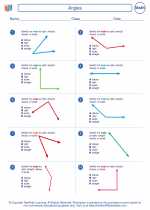 Angles
Angles  Worksheet/Answer key
Worksheet/Answer key Angles
Angles  Worksheet/Answer key
Worksheet/Answer key Angles
Angles  Worksheet/Answer key
Worksheet/Answer key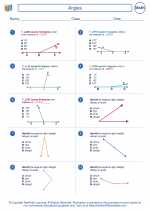 Angles
Angles  Worksheet/Answer key
Worksheet/Answer key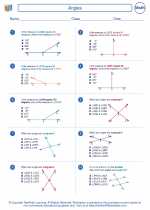 Angles
Angles  Worksheet/Answer key
Worksheet/Answer key Lines and Angles
Lines and Angles  Worksheet/Answer key
Worksheet/Answer key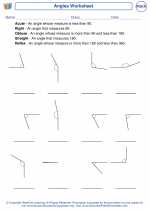 Angles
Angles  Worksheet/Answer key
Worksheet/Answer key Angles
Angles  Worksheet/Answer key
Worksheet/Answer key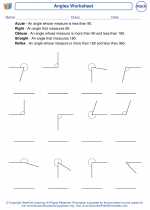 Angles
Angles 

 Worksheet/Answer key
Worksheet/Answer key
 Worksheet/Answer key
Worksheet/Answer key
 Worksheet/Answer key
Worksheet/Answer key
 Worksheet/Answer key
Worksheet/Answer key
 Worksheet/Answer key
Worksheet/Answer key
 Worksheet/Answer key
Worksheet/Answer key
 Worksheet/Answer key
Worksheet/Answer key
 Worksheet/Answer key
Worksheet/Answer key
 Worksheet/Answer key
Worksheet/Answer key
 Worksheet/Answer key
Worksheet/Answer key

The resources above cover the following skills:
Geometry (NCTM)
Analyze characteristics and properties of two- and three-dimensional geometric shapes and develop mathematical arguments about geometric relationships.
Identify, compare, and analyze attributes of two- and three-dimensional shapes and develop vocabulary to describe the attributes.
Use visualization, spatial reasoning, and geometric modeling to solve problems.
Build and draw geometric objects.